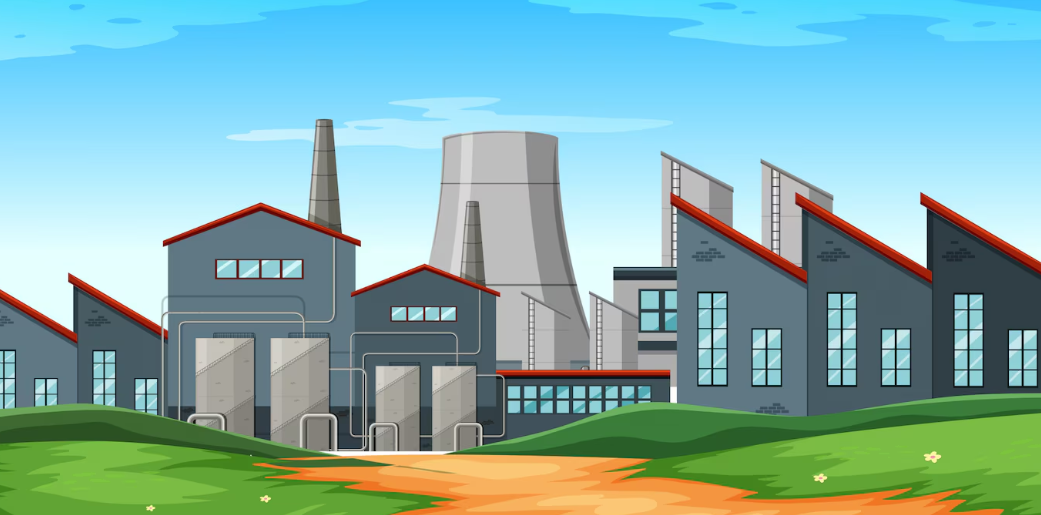INTRODUCTION
Setting up a new industry isn’t just about securing funding, building a factory, or hiring workers. One of the most crucial, yet often overlooked, aspects of starting an industry in India (or anywhere else) is siting—that is, choosing the right location in accordance with government regulations.
If you ignore this step or treat it casually, you risk violating zoning laws, environmental regulations, and even disaster management protocols. In this in-depth blog post, we’ll walk you through everything you need to know about the government guidelines for siting an industry, helping you avoid legal hurdles and future regrets.
📍 Why Siting an Industry Matters So Much
Before we dive into the laws and guidelines, let’s take a moment to understand why siting is so important:
- Environmental protection: Industrial activities can harm natural ecosystems. The government mandates industries be set up in designated zones to reduce environmental impact.
- Safety of people: Improperly sited industries can pose risks to nearby residential areas through pollution or accidents.
- Infrastructure: Some industries need large power supplies, water, and waste treatment systems which may only be available in select areas.
- Legal compliance: Violating siting norms can lead to revocation of permits, penalties, or forced shutdowns.
In short, siting isn’t just a formality—it’s the foundation for legal, safe, and sustainable operations.
🏛️ Key Government Authorities Involved in Siting Decisions
Different government departments and laws regulate siting in India. Some of the major stakeholders include:
- Ministry of Environment, Forest and Climate Change (MoEFCC)
- State Pollution Control Boards (SPCBs)
- Central Pollution Control Board (CPCB)
- Town and Country Planning Departments
- State Industrial Development Corporations
- National Disaster Management Authority (NDMA)
- Ministry of Labour and Employment
- Department for Promotion of Industry and Internal Trade (DPIIT)
Each has its own say in ensuring your industry sits in the right location from a policy, safety, and environmental standpoint.
📜 Legal Framework Governing Industrial Siting in India
Here are some major regulations and acts you must comply with while choosing a site:
1. The Environment Protection Act, 1986
This is the mother law for any environmental consideration in India. It empowers the central government to set environmental standards, including those for siting industries.
2. Environmental Impact Assessment (EIA) Notification, 2006
Industries categorized as A or B (based on size and type) must undergo an EIA before project approval. The EIA covers:
- Risk of pollution
- Proximity to eco-sensitive zones
- Social and ecological impact
- Disaster potential of industrial activities
3. Factories Act, 1948
Under Sections 6 and 7A, the layout of a factory and its location must ensure health, safety, and welfare of workers and surrounding communities.
4. National Industrial Classification (NIC)
Certain industries are red-flagged as hazardous and have additional zoning and siting restrictions.
5. The Water (Prevention and Control of Pollution) Act, 1974 and Air (Prevention and Control of Pollution) Act, 1981
State Pollution Control Boards are responsible for issuing NOCs based on your industry’s potential to pollute air and water. Location plays a critical role in this assessment.
🗺️ CPCB Guidelines for Industrial Siting
The Central Pollution Control Board (CPCB) has detailed guidelines for classifying industries into different categories, which influences siting permissions:
Industry Classification:
| Category | Pollution Index | Industry Type Examples |
|---|---|---|
| Red | 60 and above | Cement, chemicals, oil refineries |
| Orange | 41 to 59 | Textile, food processing, plastic |
| Green | 21 to 40 | Assembly industries, bakeries, light engineering |
| White | Below 20 | Toy making, air coolers, handicrafts |
🛑 Red category industries are restricted from setting up in eco-sensitive or residential zones.
✅ White category industries need minimal clearances and can be set up in semi-urban zones with ease.
🧭 NDMA Guidelines on Industrial Site Safety
The National Disaster Management Authority (NDMA) has issued comprehensive guidelines on siting hazardous industries to prevent disasters like gas leaks, fires, or chemical explosions.
Key recommendations include:
- Hazardous industries must be located at least 25 km away from populated areas.
- Buffer zones are required around high-risk industries.
- Real-time monitoring and emergency response infrastructure should be in place.
- Safety audits must be performed before final site approval.
🏞️ Prohibited and Restricted Areas
As per government policy, certain areas are either completely off-limits or need special clearance for industrial siting:
| Type of Zone | Guidelines |
|---|---|
| Eco-Sensitive Zones | No polluting industries allowed within 10 km of national parks or wildlife sanctuaries. |
| Coastal Regulation Zone (CRZ) | Industrial activity restricted within 500 meters of high tide line. |
| Forest Land | Requires forest clearance under Forest (Conservation) Act, 1980. |
| Residential Zones | Heavy industries are generally not allowed in residential or urban housing zones. |
| Seismic Zones | Industries with explosive or flammable materials are restricted in Zones IV & V. |
🧾 Step-by-Step Process to Get Siting Approval
Let’s simplify the process:
Step 1: Identify the Nature of Your Industry
Classify your business under Red, Orange, Green, or White categories. This determines how strict the siting regulations will be.
Step 2: Conduct Feasibility and Preliminary Site Survey
Engage with a town planning consultant to verify:
- Zoning compliance
- Availability of utilities
- Proximity to water sources, roads, railways
Step 3: Apply for Consent to Establish (CTE)
File this with the State Pollution Control Board (SPCB). They’ll evaluate your site and provide a clearance.
Step 4: Submit Environmental Impact Assessment (EIA)
For Red and large-scale Orange industries, submit an EIA report and hold a public consultation.
Step 5: Apply for Environmental Clearance (EC)
For certain categories under EIA Notification 2006, this is mandatory. Clearances must be obtained from the MoEFCC or State Environment Impact Assessment Authority (SEIAA).
Step 6: Clearance from Local Authorities
Get land-use approvals from:
- District Collector
- Local Industrial Development Authority
- Town Planning Department
Step 7: Final Consent to Operate (CTO)
Once construction is complete, file for the final clearance to begin operations.
🔍 Real-World Examples of Poor Siting
❌ Bhopal Gas Tragedy (1984)
Union Carbide’s plant was located dangerously close to a residential area. The gas leak killed thousands and is now cited as a classic example of bad industrial siting.
❌ Sterlite Copper Plant, Tamil Nadu
Despite multiple protests and pollution complaints, poor oversight in siting led to eventual closure after police firing and deaths in 2018.
These are reminders that wrong siting isn’t just about breaking rules—it can cost lives and lead to social unrest.
✅ Best Practices for Safe and Compliant Siting
Here are some thumb rules to follow when choosing an industrial site:
- Always choose designated industrial zones earmarked by the state.
- Avoid proximity to rivers, lakes, and residential colonies.
- Factor in wind direction to prevent pollution drifting into towns.
- Keep emergency access routes planned from the start.
- Install real-time environmental monitoring systems.
- Work closely with local communities to build trust and transparency.
🧠 Final Thoughts
The government’s siting guidelines are not meant to be roadblocks—they are safeguards. Complying with these rules not only ensures legal peace of mind but also builds a long-term, sustainable, and socially responsible business.
If you’re planning to set up an industry, always remember:
Right industry in the wrong place is a disaster waiting to happen.
Do your due diligence, hire professional consultants if needed, and always respect the laws designed to protect both people and the planet.
📌 Have You Chosen the Right Site?
Still confused about your site? Have you faced hurdles getting approvals? Share your experience in the comments. Your story could guide someone else on the right path!
👉 Stay tuned to our blog for more real-world safety tips, legal updates, and industry insights. Don’t forget to subscribe!
🔁 Readers also enjoyed these blog posts:
- Safety Management’s Role: The Unsung Hero Behind Every Successful Organization
- Safety Management and Its Responsibilities: Protecting People, Preventing Hazards, and Promoting a Culture of Care
- Benchmarking for Safety Performance: A Key to Continuous Improvement
“Start Your Website Journey Today – Exclusive Hostinger Discounts!”

Turn Any Idea into Viral,
Jaw-Dropping AI Videos in Seconds!










